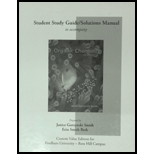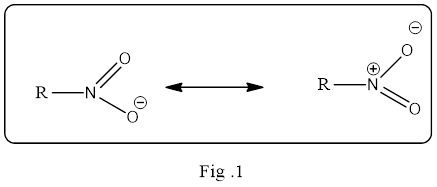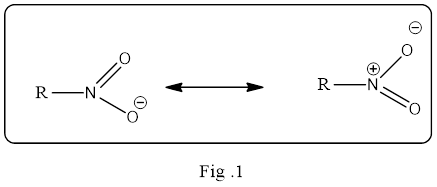
Concept explainers
(a)
Interpretation:
To draw all reasonable resonance structures for the given species
Concept introduction:
Resonance structure is an important concept in

The resonance structure must be shown in double headed resonance arrow to separate them. Example for the resonance structure is given below.
(b)
Interpretation:
To draw all reasonable resonance structures for the given species
Concept introduction:
Resonance structure is an important concept in organic chemistry and it must be understand what it means exactly. The resonance structure does not mean the structure is flipping back and forth between the two structures. It is a static and an average of the two resonance structure. Simply, it is a mixture of all possible resonance structure. And it is the electron pairs drawn in different location in the structure that are delocalized. If the delocalization of electron density is in large volume then the resonance hybrid structure is a stable one.

The resonance structure must be shown in double headed resonance arrow to separate them. Example for the resonance structure is given below.
(c)
Interpretation:
To draw all reasonable resonance structures for the given species
Concept introduction:
Resonance structure is an important concept in organic chemistry and it must be understand what it means exactly. The resonance structure does not mean the structure is flipping back and forth between the two structures. It is a static and an average of the two resonance structure. Simply, it is a mixture of all possible resonance structure. And it is the electron pairs drawn in different location in the structure that are delocalized. If the delocalization of electron density is in large volume then the resonance hybrid structure is a stable one.

The resonance structure must be shown in double headed resonance arrow to separate them. Example for the resonance structure is given below.
(d)
Interpretation:
To draw all reasonable resonance structures for the given species
Concept introduction:
Resonance structure is an important concept in organic chemistry and it must be understand what it means exactly. The resonance structure does not mean the structure is flipping back and forth between the two structures. It is a static and an average of the two resonance structure. Simply, it is a mixture of all possible resonance structure. And it is the electron pairs drawn in different location in the structure that are delocalized. If the delocalization of electron density is in large volume then the resonance hybrid structure is a stable one.

The resonance structure must be shown in double headed resonance arrow to separate them. Example for the resonance structure is given below.
Want to see the full answer?
Check out a sample textbook solution
Chapter 16 Solutions
Organic Chemistry -Study Guide / Solution Manual (Custom)
- Draw ALL REASONABLE resonance structures and the resonance hybrids of the compounds below.arrow_forwarda. Which of the following has a greater electronegativity? (circle one) Carbon / Cesium b. Explain why you chose your answer in Za.arrow_forwardWhich of the given resonance structures (A, B,or C) contributes most to the resonance hybrid? Which contributes least?arrow_forward
- Which of the given resonance structures (A, B, or C) contributes most to the resonance hybrid? Which contributes least?arrow_forwardProvided is the first and last resonance. Draw the missing resonance forms, then propose the corresonding resonance hybrids of each molecule. Show the movement of electrons using appropriate arrows.arrow_forward(a) Add curved arrows to show how the starting material A is converted to the product B. (b) Draw all reasonable resonance structures for B. (c) Draw the resonance hybrid for B.arrow_forward
- Which bond in attached pair has the higher bond dissociation energy?arrow_forwardexplain part A by first drawing all the resonance structures for the four compounds please. and then write the explanaiton. HANDDRAW it instead of using text. thanksarrow_forwardDraw all reasonable resonance struarrow_forward
 ChemistryChemistryISBN:9781305957404Author:Steven S. Zumdahl, Susan A. Zumdahl, Donald J. DeCostePublisher:Cengage Learning
ChemistryChemistryISBN:9781305957404Author:Steven S. Zumdahl, Susan A. Zumdahl, Donald J. DeCostePublisher:Cengage Learning ChemistryChemistryISBN:9781259911156Author:Raymond Chang Dr., Jason Overby ProfessorPublisher:McGraw-Hill Education
ChemistryChemistryISBN:9781259911156Author:Raymond Chang Dr., Jason Overby ProfessorPublisher:McGraw-Hill Education Principles of Instrumental AnalysisChemistryISBN:9781305577213Author:Douglas A. Skoog, F. James Holler, Stanley R. CrouchPublisher:Cengage Learning
Principles of Instrumental AnalysisChemistryISBN:9781305577213Author:Douglas A. Skoog, F. James Holler, Stanley R. CrouchPublisher:Cengage Learning Organic ChemistryChemistryISBN:9780078021558Author:Janice Gorzynski Smith Dr.Publisher:McGraw-Hill Education
Organic ChemistryChemistryISBN:9780078021558Author:Janice Gorzynski Smith Dr.Publisher:McGraw-Hill Education Chemistry: Principles and ReactionsChemistryISBN:9781305079373Author:William L. Masterton, Cecile N. HurleyPublisher:Cengage Learning
Chemistry: Principles and ReactionsChemistryISBN:9781305079373Author:William L. Masterton, Cecile N. HurleyPublisher:Cengage Learning Elementary Principles of Chemical Processes, Bind...ChemistryISBN:9781118431221Author:Richard M. Felder, Ronald W. Rousseau, Lisa G. BullardPublisher:WILEY
Elementary Principles of Chemical Processes, Bind...ChemistryISBN:9781118431221Author:Richard M. Felder, Ronald W. Rousseau, Lisa G. BullardPublisher:WILEY





